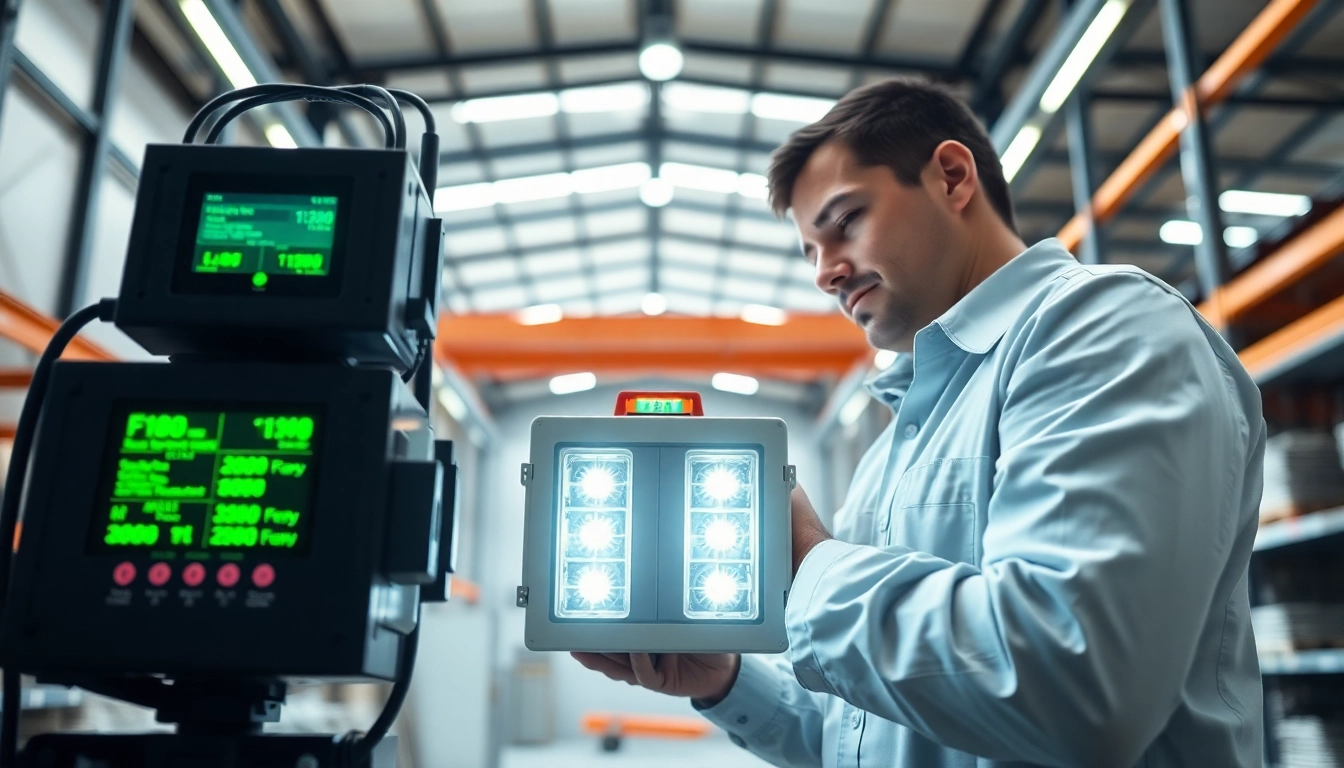Understanding Emergency Light Testing
Emergency lighting systems are crucial for maintaining safety during unexpected events such as power failures, fires, or other emergencies. Proper Emergency Light Testing ensures that these systems will function effectively when needed, providing illumination that guides occupants to exits and helps prevent injuries. This guide delves deeply into the various aspects of emergency light testing, including its significance, types of systems, testing procedures, compliance regulations, troubleshooting, and cost considerations.
What is Emergency Light Testing?
Emergency light testing involves the regular evaluation and certification of emergency lighting systems to ensure they operate as intended in crisis situations. This process includes various tests that assess the functionality, reliability, and durability of the units, including battery checks, light output assessments, and the overall system readiness to activate in emergencies. Implementing a rigorous testing schedule is vital for meeting safety regulations and protecting lives.
Importance of Regular Testing
Regular testing of emergency lights plays a critical role in ensuring safety. When emergencies arise, every second counts; malfunctioning lights can lead to chaos and panic, increasing the risk of injury or fatalities.
Moreover, many local and national regulations mandate specific testing frequencies to ensure compliance, verification of the systems reduces liabilities for businesses and facilities. Establishing a routine testing protocol ensures all staff members are familiar with emergency procedures, further bolstering safety efforts.
Emergency Light Testing Standards
Standards for emergency light testing can vary depending on local legislation, but several key guidelines are universally recognized. The National Fire Protection Association (NFPA) and the Occupational Safety and Health Administration (OSHA) provide stringent criteria regarding the frequency and duration of tests.
Typically, emergency lights should undergo a 30-second functional test monthly, while an annual test requires a full discharge test of 90 minutes to verify the system can sustain adequate illumination in a prolonged crisis. Familiarizing oneself with these standards is pivotal for compliance and safety assurance.
Types of Emergency Lighting Systems
Battery-Powered vs. Self-Contained Units
Emergency lighting systems are generally classified into two main types: battery-powered systems and self-contained units. Battery-powered units rely on batteries to function independently of the mains power supply, activated during power failures. Self-contained units, on the other hand, include the battery and charging circuitry integrated within the unit, allowing them to test themselves periodically with little intervention.
Each type has pros and cons; battery-powered units can often deliver higher wattage and longer service, while self-contained units simplify maintenance and testing procedures.
LED vs. Fluorescent Emergency Lights
In today’s market, emergency lighting solutions predominantly feature LED or fluorescent technologies. LED lights offer several advantages, including longer life expectancy, lower energy costs, and brighter output, making them a popular choice. Conversely, fluorescent lights tend to be less efficient and may require more frequent maintenance.
Choosing between the two often comes down to initial investment, desired longevity, and energy efficiency goals. Understanding the technological differences can help facility managers make informed, strategic decisions.
Choosing the Right System for Your Needs
When selecting an emergency lighting system, various factors must be considered, such as the size and layout of the facility, the specific safety requirements based on occupancy types, and budget constraints. Facilities with large areas may benefit from a combination of battery-powered and self-testing LED systems to ensure effective coverage during emergencies.
It’s critical to consult with safety experts to determine the optimal configuration that meets regulatory standards and provides reliable safety for all building occupants.
Testing Procedures for Emergency Lights
Monthly and Annual Testing Requirements
Regular testing consists of monthly and annual evaluations that ensure emergency lights are operational. Monthly, a simple test involves pushing the “test” button located on the unit, typically held for at least 30 seconds to check the bulbs and battery performance.
Annually, a more comprehensive test involves disconnecting the mains power to adequately gauge how well the system functions in real-world scenarios. This test should last a minimum of 90 minutes, mirroring the duration required for lights to perform during an emergency.
Step-by-Step Testing Process
- Ensure that the area is clear of obstacles that may hinder evacuation routes.
- Document the location of all emergency lights within the facility.
- Perform the monthly test: push and hold the test button for 30 seconds.
- Note any lights that do not illuminate and require attention.
- Conduct the annual test by wholly disconnecting the mains power; verify that lights remain operational for 90 minutes.
- Record the results and identify any required repairs or replacements.
Common Testing Tools and Equipment
To effectively carry out emergency light testing, some essential tools can assist in the process:
- Battery testers for checking voltage and charging capabilities
- Light meters to measure lumens and confirm compliance with illumination requirements
- Documentation software or checklists to innovate systematic testing schedules and results
Utilizing these tools can optimize testing processes and ensure thorough examinations of emergency lighting systems.
Compliance and Regulations
Legal Requirements for Emergency Lighting Testing
Compliance with emergency lighting regulations is non-negotiable and is enforced through federal, state, and local laws. Organizations such as OSHA and NFPA establish guidelines that businesses must adhere to, ensuring the safety of employees and patrons. Failure to comply not only jeopardizes safety but can also result in costly fines and increased liability for business owners.
Understanding NFPA and OSHA Standards
The NFPA 101: Life Safety Code outlines the minimum requirements for the testing and maintenance of emergency lighting systems. OSHA’s regulations complement these standards, specifying the need for regular inspections and functionality assessments to mitigate the risk of emergencies taking place in inadequately marked or illuminated paths.
Staying updated with these regulations can help facilities avoid penalties while enhancing safety readiness.
Documentation and Reporting Best Practices
Maintaining accurate records is paramount in testing emergency lights. Detailed documentation should include information about each test performed, the results, and any actions taken regarding maintenance or repairs needed. This transparency not only aids compliance but also serves as a historical reference for future assessments.
Implementing a digital log system can streamline this process, making it easier to track testing schedules, results, and repairs efficiently.
Troubleshooting Common Emergency Light Issues
Identifying Faulty Lights and Batteries
Even with diligent testing, emergency light systems might develop issues over time. Some common signs of malfunction include flickering lights, failure to illuminate during tests, or a decreased duration of light output during the annual test. Troubleshooting should begin with examining battery life and connections, as well as assessing bulb functionalities.
Repair vs. Replacement: When to Act
Determining whether to repair or replace a malfunctioning light can pose a challenge. Factors to consider include the age of the unit, the severity of the issue, and the cost of repairs versus replacement. Generally, if emergency lights fail testing consistently or exceed their expected lifespan, replacement is the most effective option.
Cost Considerations for Emergency Light Testing
Costs for emergency light testing can vary widely based on factors such as facility size, the number of units, and whether in-house staff performs testing or an external contractor is hired. Generally, organizations can expect to spend between $130 and $200 for testing up to 10 units, with additional costs for maintenance or repairs as necessary.
Investing in top-tier emergency lighting systems can ultimately save costs associated with frequent repairs or upgrades, highlighting the importance of both quality in products and regular testing.




